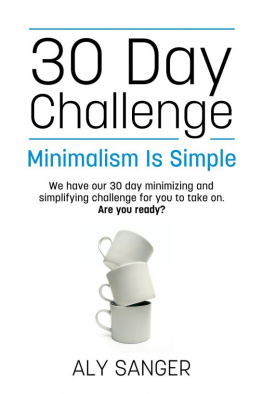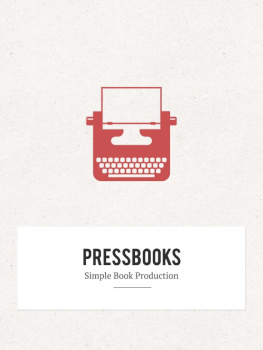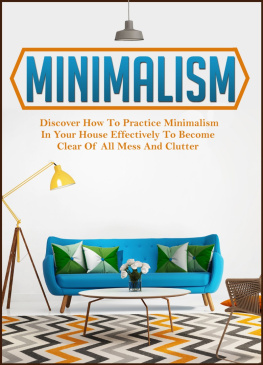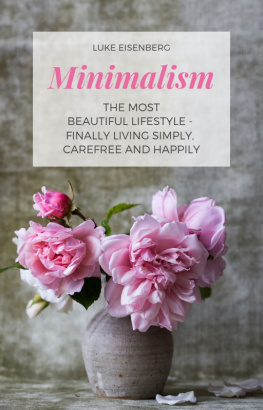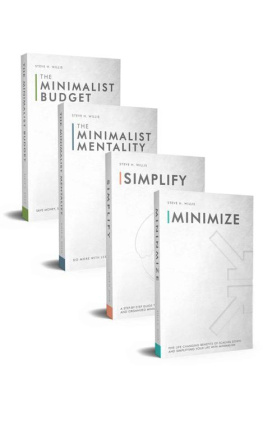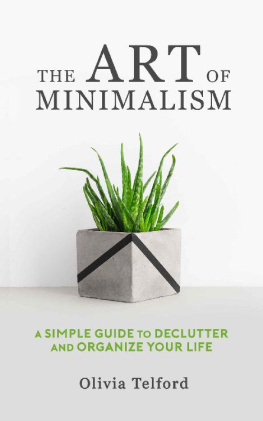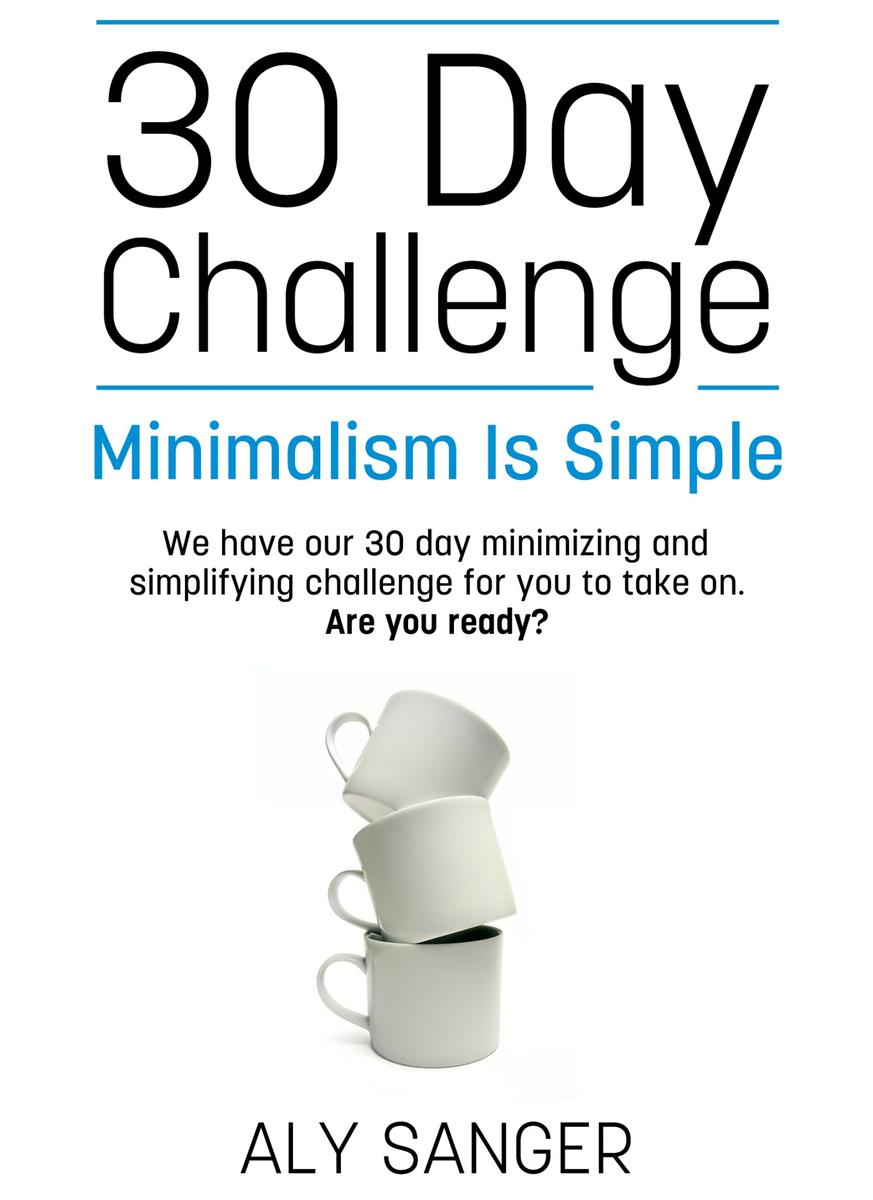
Smashwords Edition 2013
MinimalismIsSimple.com 2013, All rightsreserved.
Printed in the United States of America. Nopart of this publication may be republished or reproduced withoutexplicit permission from the copyright holder.
If you did not buy this e-book or did notreceive it from the copyright holder, please email the author at.
This guide is for educational purposes only.The contents of this guide are accurate as of its date ofpublication. Comments and feedback welcomed.

Table ofContents
I.Introduction
Introducing a minimizing and simplifyingchallenge are you ready? The goal is not just to help you losethe clutter, but to create lifestyle changes that will last.Consider this a 30 day transformation to get you ongoing resultsmonths and years down the road.
Ive introduced this 30Day Challenge to give you the opportunity to discover whatMinimalism means to you. Tackling the 30 Day Challenge should bejust that, a challenge. Im challenging you to experience yourday-to-day routine in a different way. Every day provides threetasks for you to complete. Complete the tasks at your own pace, anddo what feels comfortable to you. For each task Ill give you somehints, tips, and space to jot down your thoughts andexperiences.
You can also connectwith us and others completing the challenge on Facebook or Twitterpage, as well as on the Minimalism Is Simplewebsite.
www.facebook.com/minimalismissimple
www.twitter.com/alysimple
www.minimalismissimple.com
Frequently AskedQuestions
For yourreference, a small Frequently Asked Questions section can be foundbelow. Refer to this section if any questions arise during thechallenge.
What isMinimalism?
Defined in oneword,simplicity. Defined in many,minimalism will vary from person to person. Minimalism can meanlife changing events or it can mean purely to declutter andsimplify.
I started my journeyinto minimalism as an attempt to declutter and found that it was somuch more. Ive found that by downsizing and decluttering I woundup not only eliminating the unnecessary from my life but also thebenefits of having less stuff were plenty.
Truly Less>More.
By having less stuff Ihad more money.
By having less expectations I had more fun.
By having less expenses I had more time for friends andfamily.
By having less I had more.
Why should I dothis?
Why you should make the change is really something you need todiscover on your own; its your decision. What I can do is offeryou the reasons why I felt it was necessary to make thechange.
When I noticed that Ihad too much stuff but never seemed to have enough time or money, Iknew something was amiss. Theres no reason for someone to have ahome full of belongings and not have the time or money for the moreimportant things in life. I realized I needed to make a change. Ineeded to stop investing in stuff that may break or be lost, andstart investing in what was more important to me: Myself and myloved ones. I realized that you cannot depend on possessions tofill a need. So, I chucked the possessions and started focusing onwhat I really wanted out of life: to be happy.
If you need a reason to declutter, Ill giveyou six:
Clutter sneaks up on you. If you dontmake a conscious effort every day to put things away, eliminate theunnecessary, not splurge on things, and keep your space tidy,clutter will sneak right back into your daily life.
Clutter affects productivity. Even thesmallest amount of clutter can be a distraction. If youre planningon using a space for work, make sure you keep clutter to a minimumin the space to allow for clear focus and a positive workenvironment.
Clutter means more cleaning. The more youhave, the more you have to clean. If you want to have a home thatseasy to maintain and keep organized, reduce the amount of stuff youhave to begin with.
Clutter comes with a price tag. If youdont use the item, then youre throwing your hard earned moneyaway. Each splurge you make that goes unused, shoved in a closet,or cluttering your tables is another dollar youve just wasted.
Clutter causes stress. Clutter not onlyaffects your productivity, it can also cause an alarming amount ofstress in your life. Each item you have to care for is anotherresponsibility on your plate. If you break, chip, scratch, ordamage any of the items youre caring for, youre now forced tolook at the price you spent on it, the time you spent caring forit, and the uses the item might have had.
Clutter can be unsafe andunsanitary. Ever watch an episode of Hoarders? While thosehomes are an extreme, there is one thing you can take away fromevery episode. The more stuff you have the more dangerous thesituation. Each item you purchase can potentially become anotherfire hazard, trip hazard, or spot for germs to accumulate.
What are the benefits ofsimplicity and minimalism?
Many!Including:
What if I dont have.?
There may be some tasks during this challenge for rooms orspaces that you do not have in your home. Substitutes are perfectlyacceptable. For example, if you do not have a guest room in yourhome, you may choose to use your dining room or a coat closet as asubstitute.
How do I complete the tasksor extra credit options?
Tasks andextra credit options are really up to you. Throughout many of thesections in this book youll be presented with several options youcan take on for each day. You can choose to complete all theoptions in one day, or you can choose to complete the challengeagain, picking a different option each time.
Do I need to go in order tocomplete this challenge?
This book was set up in what Ibelieved was the easiest order to follow, but you can always chooseto change that order. You may prefer to break up the sections. Youmay not want to complete your home first, and may choose to startwith yourself. Or you may choose to do the days in a differentorder, such as day one, day two, day twenty, day ten, etc. to giveyourself some variety. You can choose to complete this challengeany way you like; I only suggest you complete the challenge inthirty days.
When you tell me to createa blank slate, what do you mean?
Before you begin anytask involving your home (and sometimes outside of your home) itsimportant to approach the area as if it was a blank canvas. When Iask you to turn a room into a blank slate, Im asking you torevert the space back into what it was before you started addingyour personal touches and items. This means removing everythingfrom the space that you brought in (unless it is a very largefurniture item). Blankets, pillows, curtains, dishes, etc. shouldall be emptied from the space. Once you remove the items do a deepcleaning of the area. The idea is to give you an area you can moldand transform into the simple and uncluttered space were aimingfor.
Next page
